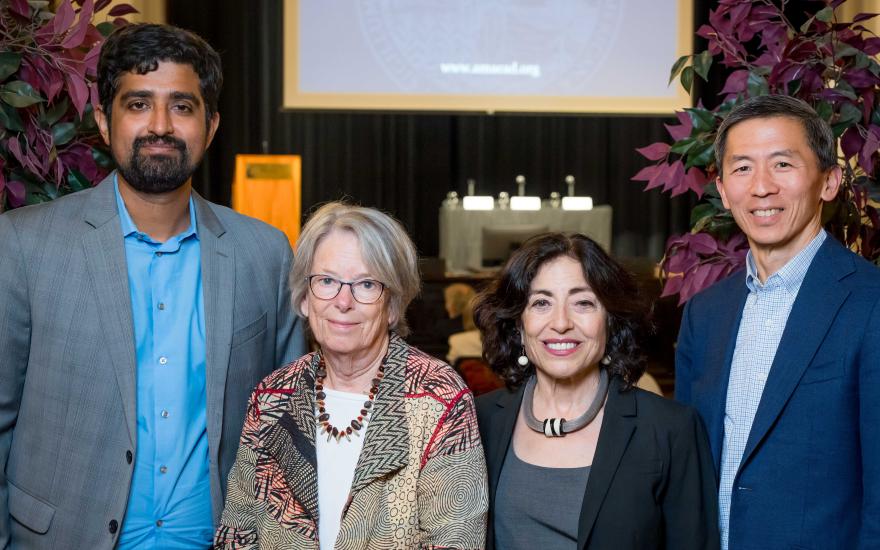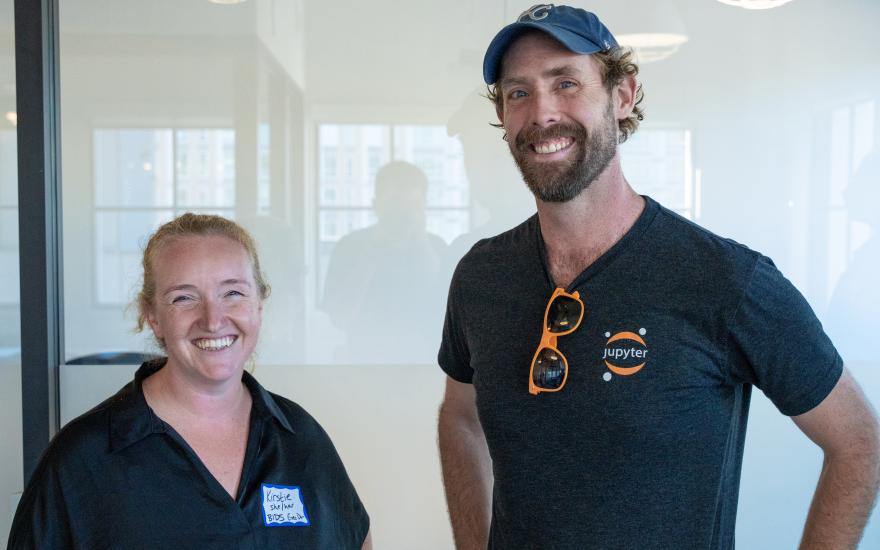
As artificial intelligence technology continues advancing at a breakneck pace, faculty at UC Berkeley are optimizing computer science courses to keep undergraduate students informed and prepared for changing careers in the tech industry and beyond.
Narges Norouzi and Joseph Gonzalez are faculty instructors for this fall’s offering of the CS 189: Introduction to Machine Learning course. More than 400 undergraduate students majoring in computer science or data science are currently enrolled in the course, which meets twice weekly for lectures and once a week for discussion.
According to Norouzi and Gonzalez, the CS 189 course update made space for rapid machine learning advances and student feedback. Berkeley has long been recognized as having one of the nation’s top undergraduate computer science programs.
With the AI boom, students are simultaneously using existing tools and developing new ones, while learning about foundational areas in computer vision and neural network architecture and keeping up with the latest research and industry advances. And faculty like Norouzi and Gonzalez are rethinking how to best train the next generation of computer scientists and data scientists.
“Instead of starting with how everything works from the ground up, we’re starting from the top down to ask students: How do you use machine learning on a daily basis? How can you apply existing models and techniques to new problems?” explained Gonzalez, associate professor in the Department of Electrical Engineering and Computer Sciences (EECS).
“As AI becomes an everyday practice, the best way to learn things might really be: first, how to use it; second, how it works,” he said.
Teaching real-world problem solving
The updated course continues to emphasize rigorous math and reproducible coding skills but includes additional focus on real-world problem-solving throughout the curriculum.
“In every assignment, students tackle one substantial machine learning problem,” said Norouzi, an EECS associate teaching professor and associate dean for students at Berkeley’s College of Computing, Data Science, and Society (CDSS).
“For example, one assignment is reproducing or building large language model (LLM) ranking algorithms used in LMArena settings,” she said. “Students play with the chatbot in a data set, write the ranking system, and evaluate the rankings of different language models.”
Homework assignments also include creating and training a neural network in ways that allow students to learn the math underlying neural networks so they can better optimize the network they’re training.
“In industry, some people are treating all of these models as if they are off-the-shelf, black box programs that they directly call and do the inference on, but not actually contribute to their development or understand what’s going on behind the scenes,” said Norouzi. “The experience of training a neural network allows students to get real-life experience in understanding generative AI.”

Enabling AI tools for teaching and learning
Norouzi expects that educators and students in STEM and other disciplines will increasingly adopt AI tools to support teaching and learning. She referenced a recent Berkeley AI symposium that gathered faculty, librarians and curriculum developers across campus to discuss the use of generative AI in the classroom.
“Computing education is uniquely positioned to decide how it wants to use AI tools, and then how much it wants to revise the curriculum of teaching that particular discipline,” said Norouzi. “There are general ways that AI can improve education, like personalized tutoring or tools for question answering. As long as you have the context of specific disciplines, you can use and deploy question-answering systems that support teaching and learning.”
Norouzi led the development of one such tool, Askademia; the prototype won the best overall paper award at the International Conference on Artificial Intelligence in Education (AIED25) earlier this year. Meenakshi Mittal, an EECS graduate student, is now leading the next phase to incorporate more pedagogical features into Askademia and ensure scalable deployment across courses in CDSS.
“My work focuses on how to make sure that we can deliver support at scale in education, whether that’s teaching lectures, question answering, essay grading, or generating exercises,” Norouzi said. “I think these kinds of AI-enabled teaching resources can be adoptable to different disciplines.”
Gonzalez reflected on the need for continuous curriculum updates and remaining flexible at a time when computer science is seeing unprecedented change.
“In the end, we can never be fully up-to-date in a field that’s changing so rapidly, and I think that’s okay,” said Gonzalez. “Our goal at UC Berkeley isn’t just to prepare students for what’s now, but maybe more critically, we want to help students learn how to quickly adapt to challenging new concepts.”







